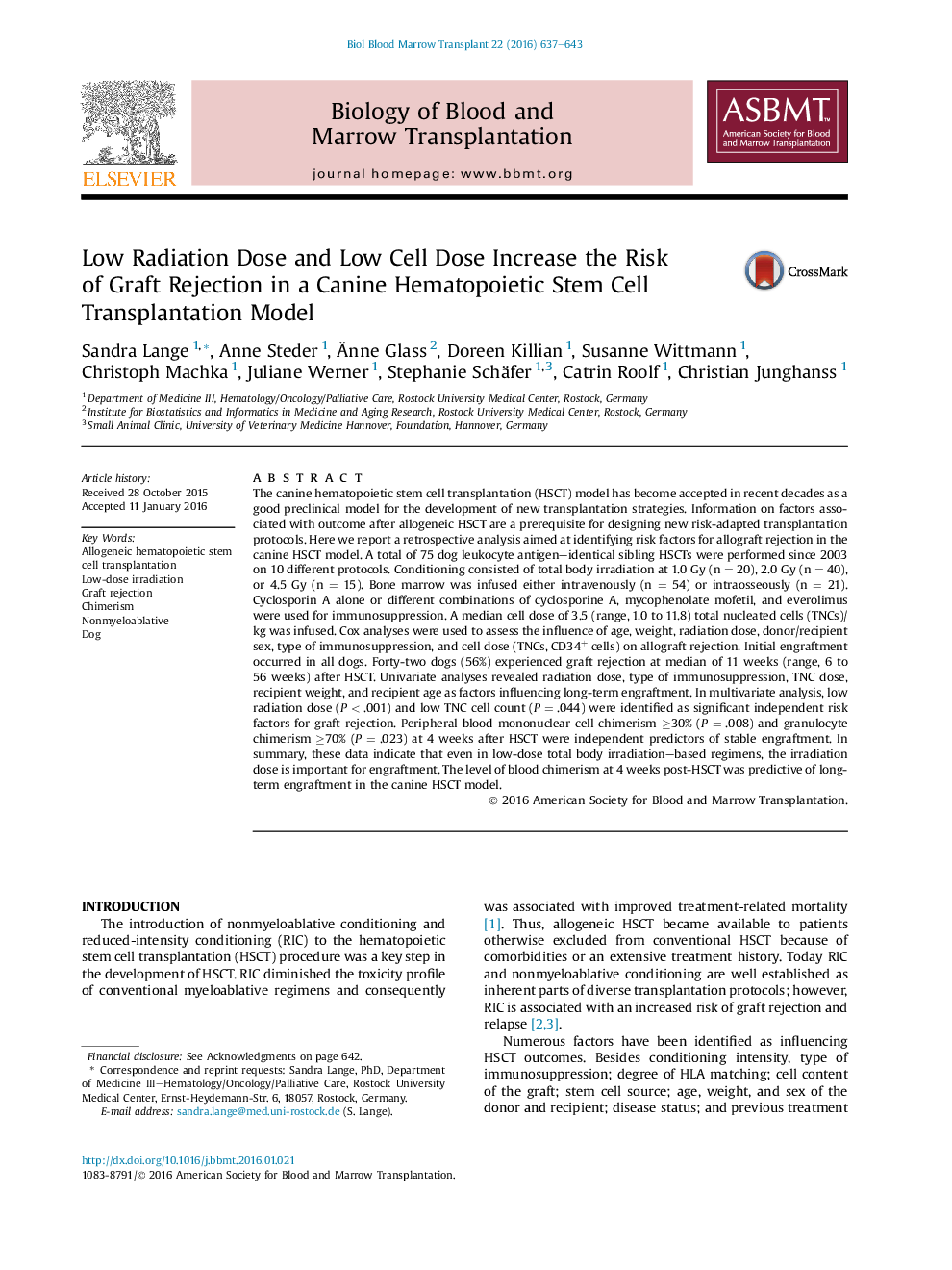| کد مقاله | کد نشریه | سال انتشار | مقاله انگلیسی | نسخه تمام متن |
|---|---|---|---|---|
| 2101342 | 1546255 | 2016 | 7 صفحه PDF | دانلود رایگان |
• Risk factors for graft rejection were determined in the canine transplantation model.
• Low radiation dose (≤2 Gy) was a significant risk factor for graft rejection.
• TNC cell count <5 × 108/kg was a significant risk factor for graft rejection.
• Novel immunosuppression using RAD/CSA and RAD/MMF did not reduce graft rejection.
• Blood chimerism at day +28 post-transplantation was predictive of long-term engraftment.
The canine hematopoietic stem cell transplantation (HSCT) model has become accepted in recent decades as a good preclinical model for the development of new transplantation strategies. Information on factors associated with outcome after allogeneic HSCT are a prerequisite for designing new risk-adapted transplantation protocols. Here we report a retrospective analysis aimed at identifying risk factors for allograft rejection in the canine HSCT model. A total of 75 dog leukocyte antigen–identical sibling HSCTs were performed since 2003 on 10 different protocols. Conditioning consisted of total body irradiation at 1.0 Gy (n = 20), 2.0 Gy (n = 40), or 4.5 Gy (n = 15). Bone marrow was infused either intravenously (n = 54) or intraosseously (n = 21). Cyclosporin A alone or different combinations of cyclosporine A, mycophenolate mofetil, and everolimus were used for immunosuppression. A median cell dose of 3.5 (range, 1.0 to 11.8) total nucleated cells (TNCs)/kg was infused. Cox analyses were used to assess the influence of age, weight, radiation dose, donor/recipient sex, type of immunosuppression, and cell dose (TNCs, CD34+ cells) on allograft rejection. Initial engraftment occurred in all dogs. Forty-two dogs (56%) experienced graft rejection at median of 11 weeks (range, 6 to 56 weeks) after HSCT. Univariate analyses revealed radiation dose, type of immunosuppression, TNC dose, recipient weight, and recipient age as factors influencing long-term engraftment. In multivariate analysis, low radiation dose (P < .001) and low TNC cell count (P = .044) were identified as significant independent risk factors for graft rejection. Peripheral blood mononuclear cell chimerism ≥30% (P = .008) and granulocyte chimerism ≥70% (P = .023) at 4 weeks after HSCT were independent predictors of stable engraftment. In summary, these data indicate that even in low-dose total body irradiation–based regimens, the irradiation dose is important for engraftment. The level of blood chimerism at 4 weeks post-HSCT was predictive of long-term engraftment in the canine HSCT model.
Journal: - Volume 22, Issue 4, April 2016, Pages 637–643
